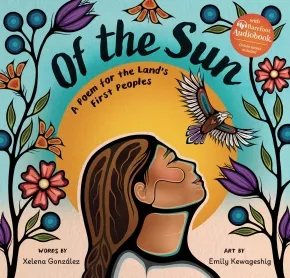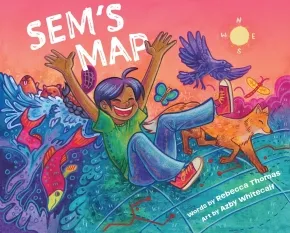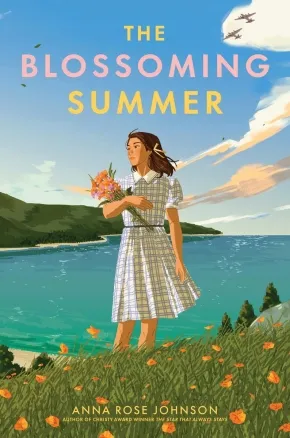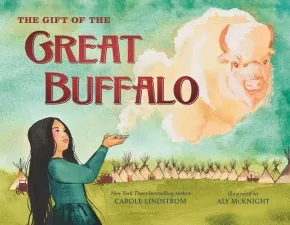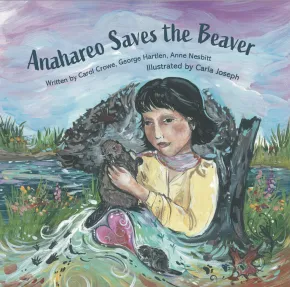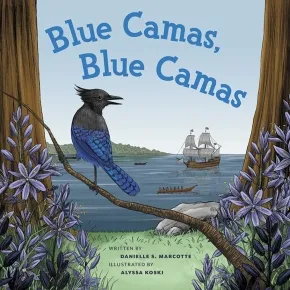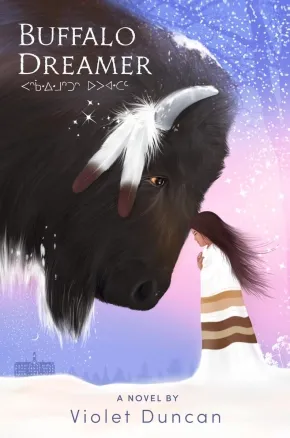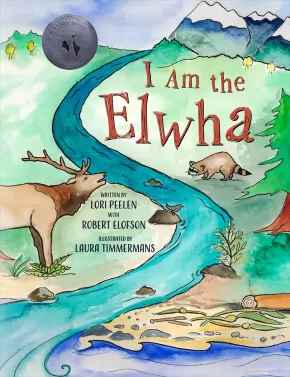
Historical Fiction
1
-
15
of
106 Results;
Sort By
Go To
of 8
Algonquin Legacy
$16.99
Format:
Paperback
Text Content Territories:
Indigenous Canadian; First Nations; Anishinaabeg; Algonquin; Blackfoot Confederacy (Siksikaitsitapi); Cree (Nehiyawak); Mi'kmaq;
ISBN / Barcode: 9781459756304
Synopsis:
Synopsis:
This thrilling conclusion to the Algonquin Quest series ends the Anishinaabe peoples' fifty-year odyssey from the east coast of Turtle Island to the mysterious shadow of the Rocky Mountains.
Algonquin Legacy starts out fifteen years after the Battle of Crow Wing River where the combined allies of the Anishinaabe had fought the powerful Lakota nation in the Lakota homelands. The battle ended abruptly when there was a solar eclipse - an actual event that took place on July 16, 1330, from 1:03 to 3:10 p.m., in the area where they were fighting. The warriors on both sides thought it was an omen and retreated.
When the Anishinaabe returned to their village the decision was made to go towards the western sun to settle. This decision came at great cost to the surviving family of the late Omàmiwinini (Algonquin) leader Mahingan. His son, daughter, and the great Mi'kmaq warrior Crazy Crow, went to the west with the Anishinaabe. Mahingan's wife and nephews, along with their wives, friends, and Mahigan's brother, Mitigomij, the greatest warrior of them all, who was also a shape shifter, travelled back to their homelands along the Kitcisìpi Kitchi (Ottawa River), splitting up the very strong family.
Educator Information
Recommended for ages 12 to 15.
This is the fourth book in the Algonquin Quest series.
This novel continues on in the tradition of the previous three with Native languages in the vernacular, teachings about the culture of that era, hunting practices and how they lived day to day. Life before the Europeans, before the Four Horsemen of the Native Apocalypse came into their lives; Disease, Alcohol, Guns and Religion.
Additional Information
318 pages | 5.50" x 8.50" | Paperback
Celebrating Potlatches
$21.95
Artists:
Format:
Hardcover
Text Content Territories:
Indigenous Canadian; First Nations; Tsimshian (Ts'msyen); Nisga'a;
ISBN / Barcode: 9781771746564
Synopsis:
Synopsis:
“Papa, what is a Potlatch?”
Inspired by Ts’msyen Chief William Beynon’s historic notebooks on Potlatches in the Gitxsan village of Gitsegukla, Celebrating Potlatches pairs intergenerational storytelling with beautiful illustrations to honour Indigenous traditions. From the award-winning author of Oolichan Moon and the accomplished illustrator of Be a Good Ancestor, this book recounts the 1885 Potlatch ban and the resilience of the communities who fought to keep their traditions alive.
Reviews
“Heartfelt and timely, Celebrating Potlatches gifts readers with cultural teachings through an intergenerational account of Indigenous resilience. This book is a beautiful tribute to the author’s great-grandfather, William Beynon, whose life’s work documenting oral histories of Sm’algya̱x-speaking Peoples and their Potlatches continues to be foundational to our cultural resurgence today.” – Sm Łoodm ‘Nüüsm (Dr. Mique’l Dangeli), Sm’algya̱x language expert and Assistant Professor of Indigenous Arts at the University of Victoria
“This beautiful book shares the importance of community, culture, and identity. As you make your way through the pictures and words, they bring you to an understanding of how important the Potlatch ceremony was and continues to be for Indigenous Peoples.” – Carolyn Roberts, educator, speaker, and author of Re-Storying Education
Educator Information
Recommended for ages 4 to 8.
Through this conversational historic account, readers can learn alongside the narrator as his Papa shares his wisdom about the rich history of the Potlatch.
Curriculum Connections
- Early literacy – listening, reading, and discussing
- Art – traditional Indigenous art, drumming, and regalia
- Social studies – the 1885 Potlatch ban, history of Indigenous Peoples, connection to community
- Social responsibility – uplifting ourselves and others, honouring traditions
- Indigenous knowledge and traditions – traditional teachings, Potlatch ceremonies, intergenerational storytelling
Two free, downloadable lesson plans—one for kindergarten to Grade 1 and one for Grades 2 to 3—provide connections to Social Studies curriculum.
Additional Information
32 Pages | 10" x 8.5" | Hardcover
Faye and the Dangerous Journey: An Ojibwe Removal Survival Story
$13.99
Artists:
Format:
Paperback
Text Content Territories:
Indigenous American; Native American; Anishinaabeg; Ojibwe (Chippewa);
ISBN / Barcode: 9781669086239
Synopsis:
Synopsis:
In the fall of 1850, Faye and her family begin a long, difficult journey with thousands of other Ojibwe people to receive money the U.S. government owes them. But why isn’t the money being delivered to them in Wisconsin, as usual? Why must they walk and canoe all the way to the middle of Minnesota in terrible weather? These are questions Faye asks, but the answers don’t make sense. When her family reaches their destination, Mama is sick, and there is no money as promised. Will Faye and her family make it back home? Will there be a home to return to? In this gripping story with nonfiction backmatter—including an author’s note, discussion questions, and more—readers will learn about the traumatic events of the Sandy Lake Ojibwe removal in this Girls Survive historical fiction.
Educator Information
Recommended for ages 8 to 12.
Additional Information
112 pages | 5.25" x 7.50" | Paperback
Of the Sun: A Poem for the Land's First Peoples
$22.99
Format:
Hardcover
Text Content Territories:
Indigenous American; Indigenous Canadian; Indigenous Caribbean; Indigenous Peoples in Mexico; Indigenous South American;
Grade Levels: Preschool; Kindergarten;
ISBN / Barcode: 9798888596500
Synopsis:
Synopsis:
A powerful and hopeful ode to Indigenous children.
Indigenous. Native. On this land, you may roam.
Child of the sun, on this land, you are home.
Of the Sun is an uplifting and mighty poem that wraps the Indigenous children of the Americas in reassuring words filled with hope for a brighter future and reminders of their bond and importance to the land. Each page fills them with pride and awe of their cultural heritage and invites them to unite and inspire change in the world.
Paired with powerful art reflecting cultures of various Indigenous Nations and Tribes, the poem offers all readers a sense of the history and majesty of the land we live on and how we can better care for ourselves and the world when we recognize our connection to the land and to each other.
Written by Xelena González, poet and activist in the Native and Latinx communities, and an enrolled member of the Tap Pilam Coahuiltecan Nation. Bold illustrations by prominent Anishinaabe illustrator Emily Kewageshig depict landscapes across the Americas and children from many backgrounds
Endnotes provide more information on Native and Indigenous unity and activism in younger generations
Reviews
"Of The Sun is a loving homage to the Indigenous peoples of this land—both in González’s beautiful, lyrical poem and Kewageshig’s warm, vibrant Anishinaabe-styled artwork. A wonderful read aloud you must add to bookshelves at home, at school, and in community!" - Traci Sorell, award-winning author of We Are Grateful Otsaliheliga and At The Mountain’s Base
"A luminous song, poem, promise
of cultures and connection,
of kinship and caring,
for Indigenous children across the continent." - Cynthia Leitich Smith, author of Jingle Dancer
Educator Information
Recommended for ages 3 to 5.
Subjects / Themes / Topics Included: Indigenous Peoples in the Americas; Poetry; Land Connection; Inuit Clothing; Traditional Hair Bun (tsiiyéél); Concheros Dance; Three Sisters; La Danza de la Flor de Piña; Smoke Dance; Jingle Dress Dance; Manoomin (Wild Rice); English Words from Indigenous Languages; Indigenous Farming Practices; Bison; Land Back Movement.
Additional Information
32 pages | 10.00" x 9.75" | Hardcover
Road Allowance Kitten: Full Circle
$17.50
Artists:
Text Content Territories:
Indigenous Canadian; Métis;
ISBN / Barcode: 9781988011370
Synopsis:
Synopsis:
In Road Allowance Kitten: Full Circle, Madeline, Rosie, and their cat, Kitten continue to share adventures. This time with a visit to a circus. However, Madeline is unexpectedly diagnosed with tuberculosis and is sent to a sanitarium to recover; sadly, a common experience for Indigenous Peoples in the early twentieth century. While healing there, Madeline resumes her friendship with Rosie and Kitten, albeit from a distance, and the trio demonstrates the enduring strength of true friendship and the importance of hope when faced with adversity. The family finds itself full circle, back on a road allowance in the valley so they can be closer to Madeline.
Richly steeped in Michif culture and vividly illustrated by Christina Johns, this uplifting story leaves young readers with a strong impression of Métis resilience and pride. Road Allowance Kitten: Full Circle is a welcome addition to Wilfred Burton’s acclaimed historical fiction series, which includes Road Allowance Kitten and Road Allowance Kitten: Broken Promises.
Educator & Series Information
Dual-language: English and Michif
Translation by Larry Fayant and Irma Klyne
Additional Information
39 Pages | 8.5” x 11” | Paperback
Sem's Map
$14.95
Artists:
Format:
Paperback
Text Content Territories:
Indigenous Canadian; First Nations; Mi'kmaq (Mi'gmaq);
ISBN / Barcode: 9781774714966
Synopsis:
Synopsis:
From the author of I'm Finding My Talk comes a candid picture book about the importance of Indigenous place names, and acknowledging traditional lands.
Sem is confused. The map Mr. Trainer has just put on the screen is all wrong. It's the same shape as Turtle Island but it's nothing but boxes and lines, and it's filled with names he doesn't know. There's no reference to the stories of the land his Kiju tells him every night while she braids his hair. But Sem's teacher and classmates claim there's nothing wrong. It's the same map they've always used.
See tries to see the land the way Mr. Trainer showed him, but it just doesn't feel right. Where is the story of how the moose gets his dinner? Or where the fish run in the spring? Or when to tap the trees for syrup?
With the help of Kiju, Sem will show his teacher and his classmates how the stories of the land, the Indigenous place names, are far older than any map.
A gentle calling-in, this assured story from Governor General's Award finalist Rebecca Thomas is paired with colourful, lively illustrations from Azby Whitecalf, as well as colonial and decolonial maps of Turtle Island (North America) for reference. Sem's Map is an invaluable resource for caregivers, educators, and young readers about the importance of acknowledging the traditional lands we live on, and unlearning colonial ways of the past.
Educator Information
Recommended for ages 5 to 9.
Themes / Subjects: First Nations, Indigenous Knowledge, place names, land acknowledgement, decolonization, history, social studies
Additional Information
32 pages | 10.00" x 8.00" | Paperback
The Blossoming Summer
$24.49
Format:
Hardcover
Text Content Territories:
Indigenous Canadian; First Nations; Anishinaabeg;
ISBN / Barcode: 9780823458530
Synopsis:
Synopsis:
When English thirteen-year-old Rosemary is evacuated to her grandmother in America at the start of World War II, she uncovers the family secret—they are Anishinaabe and passing as white.
Life in England is all Rosemary has ever known. . . but as WWII changes the world, no one’s life is left unscathed. Suddenly, she’s sent away to escape the devastation of London. Her grandmother’s house on Lake Superior is safe, but unfamiliar, especially as she discovers her parents have kept a tremendous secret.
Rosemary and her family are Anishinaabe—and no one is supposed to know.
Far from home but newly connected to a once-hidden part of her family, Rosemary develops a warm, close relationship with her grandmother… and a local boy whose love of gardening helps her to see the beauty in her unexpected circumstances. As Rosemary grows into her new life like a flower in bloom, she realizes that maybe she’s not as far from home as she thought.
Tender, sophisticated, and sweet, this is a beautiful story about memory, family, and identity. Rising Ojibwe author Anna Rose Johnson addresses the trauma of World War II and the legacies of hidden indigeneity alongside coming-of-age milestones like first crushes, new schools, and beginning to imagine the life you want. Hand The Blossoming Summer to fans of Christine Day, L.M. Montgomery, and Kimberly Brubaker Bradley!
Educator Information
Recommended for ages 8 to 12.
Additional Information
288 pages | 5.50" x 8.25" | Hardcover
The First Peoples
$22.95
Artists:
Text Content Territories:
Indigenous Canadian; Inuit;
ISBN / Barcode: 9781772275650
Synopsis:
Synopsis:
Based on an ancient Inuit traditional story, this beautifully illustrated picture book tells of the appearance of the first humans on earth, and how from them all the peoples of the earth emerged. From a mound of simple dirt, through magic and intention, the world we know today slowly takes shape across the page.
Retold with loving care by Inuit author and actress Maika Harper, The First Peoples is both mythical and magical, an ancient tale brought to life for new generations.
Educator Information
Recommended for ages 6 to 8.
Additional Information
24 pages | 8.50" x 9.50" | Hardcover
The Gift of the Great Buffalo
$24.99
Artists:
Format:
Hardcover
Text Content Territories:
Indigenous American; Native American; Anishinaabeg; Ojibwe (Chippewa); Métis;
ISBN / Barcode: 9781547606887
Synopsis:
Synopsis:
In this beautiful and dramatic story, bestselling author Carole Lindstrom and illustrator Aly McKnight show readers how life was lived by Indigenous communities, offering the true history of life on the prairie.
Before there was a little house on the prairie, there was a tipi on the prairie.
Rose is a young Métis-Ojibwe girl who has traveled far with her family for the biannual buffalo hunt made up of hundreds of other Métis families. The ritual of the hunt has been practiced for generations, and each hunt must see the community through the next six months. But in recent years, the buffalo population has dwindled, and after days on the hunt, there are no buffalo to be found. Can Rose help her family find the herd that will enable them to survive the long winter?
Reviews
“This vital and authentic picture book offers an exciting adventure on the prairies not often heard.” —Booklist, starred review
“[Sparks] discussion about environmental conservation and the role that Indigenous people have played (historically and currently) in the care and regrowth of natural lands . . . Skillfully captures the wild beauty of the plains.” —BCCB
Educator Information
Recommended for ages 4 to 8.
Additional Information
40 pages | 8.46" x 11.02" | Hardcover
Anahareo Saves the Beaver
$19.99
Artists:
Format:
Paperback
Text Content Territories:
Indigenous Canadian; First Nations; Haudenosaunee (Iroquois); Kanyen'keha:ka (Mohawk);
ISBN / Barcode: 9781039196254
Synopsis:
Synopsis:
Anahareo Saves the Beaver is the lost story of how Anahareo, an Indigenous woman, helps save the beaver from extinction. Anahareo helps to initiate the conservation movement by convincing Grey Owl to adopt two beaver kits and give up trapping. She helps him raise environmental awareness around the world. The story is accompanied by some Anishinabe translations and teachings as well as some thought-provoking environmental insights which will appeal to children ages 3 to 8.
Educator Information
The publisher recommends this work for ages 3 to 8.
Translation and Indigenous Teachings are by Dennis and Elaine Mckay, Anishinabe elders, Rolling River First Nation.
Proceeds from this book go to Friends of Riding Mountain.
Additional Information
32 Pages | 8.5" x 8.5" | Paperback
Blue Camas, Blue Camas (PB)
$14.95
Format:
Paperback
Text Content Territories:
Indigenous Canadian; First Nations; Salish; Coast Salish; Songhees (Lekwungen);
ISBN / Barcode: 9781772035247
Synopsis:
Synopsis:
The captivating story of how the Blue Camas, a flower that has been cultivated on Canada’s west coast since time immemorial, came to symbolize the meeting of two contrasting ways of life and the perseverance of traditional knowledge against all odds.
Blue Camas, Blue Camas tells the story of a flower that is native to the Northwest Coast of North America. For thousands of years, it has been considered a sacred and valuable plant by the Indigenous Peoples of this region, who harvested and traded Blue Camas bulbs all along the west coast. At the height of this period, meadows would come alive with the bright wildflowers, which would attract dozens of species of butterflies and birds, and entire villages would work together to harvest the plant and ensure its continued growth.
When Europeans arrived and began to colonize the land, they did not see the value of the Blue Camas plant, and in fact saw the meadows where the plant had been harvested as ideal terrain to grow their own crops. The story takes place at the point of contact between a Lkwungen community and a group of Irish settlers, who see the land in very different ways.
This beautifully illustrated picture book is an ode to a way of life that was threatened and nearly destroyed through miscommunication and colonization. It also raises awareness for food rights, biodiversity, and the preservation of ecosystems, offering children and teachers the opportunity to discuss these important themes in an open and constructive way.
Reviews
"Blue Camas, Blue Camas is a captivating story revealing the overlooked history of colonial contact and its impact on Indigenous communities. Through vivid storytelling and diverse voices, it emphasizes land stewardship, cultural heritage, and fostering empathy, making it a valuable resource for children.”—Samantha Beynon, author of Oolichan Moon
“A beautiful story and an important narrative about the timeline of colonial contact . . . I am happy to share this book with my children.”—Sen’ákw, Senaqwila Wyss, Squamish Nation ethnobotanist
“Danielle S. Marcotte offers a rich, historical perspective of the amazing Blue Camas plant through the eyes of a First Nations family and a settler family.”—Teoni Spathelfer, Heiltsuk author of the Little Wolf Series
“This beautiful story weaves together a rich and important narrative. Family, nature, and the village are all intertwined, with the camas at the centre of it all. So simple and yet so poignant and true!”—Robert "Lucky" Budd, co-author (with Roy Henry Vickers) of the Northwest Coast Legends Series and A Is for Anemone: A First West Coast Alphabet
Educator Information
Recommended for ages 4 to 8.
Additional Information
48 pages | 9.00" x 9.00" | Paperback
Buffalo Dreamer
$24.50
Format:
Hardcover
Text Content Territories:
Indigenous Canadian; First Nations; Cree (Nehiyawak);
ISBN / Barcode: 9780593624814
Synopsis:
Synopsis:
An illuminating novel about the importance of reclaiming the past, based on the author’s family history.
Summer and her family always spend relaxed summers in Alberta, Canada, on the reservation where her mom’s family lives. But this year is turning out to be an eye-opening one. First, Summer has begun to have vivid dreams in which she's running away from one of the many real-life residential schools that tore Native children from their families and tried to erase their Native identities. Not long after that, she learns that unmarked children’s graves have been discovered at the school her grandpa attended as a child. Now more folks are speaking up about their harrowing experiences at these places, including her grandfather. Summer cherishes her heritage and is heartbroken about all her grandfather was forced to give up and miss out on. When the town holds a rally, she’s proud to take part to acknowledge the painful past and speak of her hopes for the future, and anxious to find someone who can fill her in on the source of her unsettling dreams.
Reviews
“An important middle grade novel about a family reunion, as well as the histories of the Indian residential schools that were set up across the U.S. and Canada. . . . Based on Duncan’s family history, this novel balances an exploration of a painful events with idyllic scenes of intergenerational love and connection. Beautiful descriptions of traditional Native American culture and dress make scenes vivid for readers as Summer’s family rides horses, picks berries, prepares meals, and shares stories, even ones that have remained unspoken. A powerful addition to all middle grade library shelves highlighting a time in history that has been hidden and often forgotten in both Canada and the U.S.” —School Library
“Past and present converge in Duncan's novel about an extended Canadian Cree family spending vacation time together. . . . This story of maturation and involvement in community will appeal to readers interested in the past and in present-day social action.” —Booklist
“Summer is earnest, thoughtful, and unfailingly kind . . . the perfect narrator to introduce a heavy topic that is underexplored in literature for youth. For readers unfamiliar with the schools, enough context is given to understand the immense evil of a system that ripped Indigenous children away from their families to essentially abuse them into being acceptably ‘standard.’ Duncan’s powerful afterward offers a brief description of how her own family survived the harrowing experience of the residential school system, ending the book with a poignant sense of intimacy.” —The Bulletin of the Center for Children’s Books
Educator Information
Recommended for ages 10+.
Additional Information
128 pages | 5.69" x 8.56" | Hardcover
Dad, I Miss You
$22.95
Artists:
Format:
Hardcover
Text Content Territories:
Indigenous Canadian; Inuit;
ISBN / Barcode: 9781772274820
Synopsis:
Synopsis:
Told in the voice of a boy and his father by turns, this book takes a thoughtful and heartfelt look at the emotional toll of a child being taken from their family and community to attend residential school.
While the child’s internal monologue expresses his fear, confusion, and loss, the father’s monologue conveys his own sadness, fears, and hopes for the future of his child. The narrative gives voice to the things left unsaid between a parent and child experiencing this heart-rending separation. Upon his return to his community, when father and son are reunited, they must start the long process of reconnection.
Based on the author’s family history of residential school separation, this book provides a unique perspective on the difficult cycle of loss, reconnection, and regaining hope for the future.
Educator Information
Recommended for ages 9 to 12.
Additional Infroamtion
40 pages | 9.00" x 8.00" | Hardcover
Growing up Métis : Stories of Resiliency
$17.50
Artists:
Format:
Paperback
Text Content Territories:
Indigenous Canadian; Métis;
ISBN / Barcode: 978-1-988011-34-9
Synopsis:
Synopsis:
Cort Dogniez’s Growing up Métis: Stories of Resiliency is the second installment of his historical fiction series that began with Road to La Prairie Ronde. In two separate, but connected fictionalized stories, Cort delves into the lives of two of his foremothers: his great-grandmother, Josephine Gariepy and his grandmother, Clara Dumont when they were young. While highlighting the dispossession and marginalization of his ancestors following the 1885 Resistance, Cort deftly weaves Métis culture through these two stories with a positive “focus on nicknames, faith, storytelling, and a resilient spirit.”
Jade McDougall’s beautiful illustrations brings these poignant, coming of age stories to life. Growing up Métis: Stories of Resiliency includes Michif and Cree glossaries to reflect Josephine and Clara’s first languages as well as guide questions for educators to explore the stories and Métis culture in depth with their students.
Educator & Series Information
Recommended by the publisher for ages 9+.
This book is the second installment in the historical fiction series that began with Road to La Prairie Ronde.
Additional Information
85 Pages | 14 cm x 20.3 cm | Paperback
I Am the Elwha (PB)
 $14.95
$14.95

Artists:
Format:
Paperback
Text Content Territories:
Indigenous American; Native American; Salish; Coast Salish; Klallam (Clallam); Lower Elwha Klallam Tribe;
ISBN / Barcode: 9781771746311
Synopsis:
Synopsis:
"I am the Elwha, rushing down to the sea. I am the Elwha, wild and free."
The Elwha River flows 72km (45 miles) from its source in the Olympic Mountains to the Strait of Juan de Fuca in the Pacific Northwest. Uniquely, it hosts all six salmon species (Pink, Chinook, Coho, Sockeye, Steelhead, and Chum) as well as several species of trout.
In 1911, two dams were built on the river. The dams blocked the migration routes of the salmon and dramatically altered the entire river ecosystem for 100 years. In 2012, the dams were decommissioned and the world's largest dam removal and habitat restoration project began. In this lyrical and beautifully illustrated book, the author chronicles the history of the Elwha.
Narrated by the powerful voices of plants and animals that inhabit the river ecosystem, the dam builder, a worker, members of the Klallam Tribe, and the river itself, this story celebrates the ongoing rewilding of this special environment and offers a welcome to all the creatures who are coming home.
To learn more visit: www.elwha.org
Awards
- 2021 Riverby Award for Young Readers
Reviews
“I Am the Elwha is a powerful read about a powerful river and those who value and protect it." – Raina Delisle, Hakai Magazine
Educator Information
Recommended for grades 3 to 7.
At the back of the book are three pages of cultural, scientific, and historical information that discuss the following:
- the importance and symbolism of salmon to the Lower Elwha Klallam Tribe and other Coastal Salish Tribes
- facts about the six species of salmon found in the Elwha River (Chinook, Pink, Chum, Sockeye, Coho, and Steelhead)
- the history of the Elwha River and its status today
Keywords / Subjects: The Elwha River, Rivers, Dams, History, Environmental Awareness, Lower Elwha Klallam Tribe, Coast Salish, Native American, Culture, Washington, Animals, Salmon, First Salmon Ceremony, Plants, Nature, Settlers, Social Responsibility, Environmental Activism, Poetry.
Additional Information
32 Pages | 8.5" x 11" | ISBN: 9781771746311 | Second Edition | Paperback
Authenticity Note: This lyrical story, which chronicles the history of the Elwha River, is written by Lori Peelen. Robert Elofson, Tribal Elder and Harvest Manager in the Natural Resources Department for the Lower Elwha Klallam Tribes, approved Lori's work and contributed pages of back matter at the end of the work. Lori's story was further approved by Frances Charles, the Tribal Councilwoman for the Lower Elwha Klallam Tribe, after the entire council read and approved it.
The Canadian Content label has been applied because the illustrator of this work is Canadian.
Sort By
Go To
of 8






